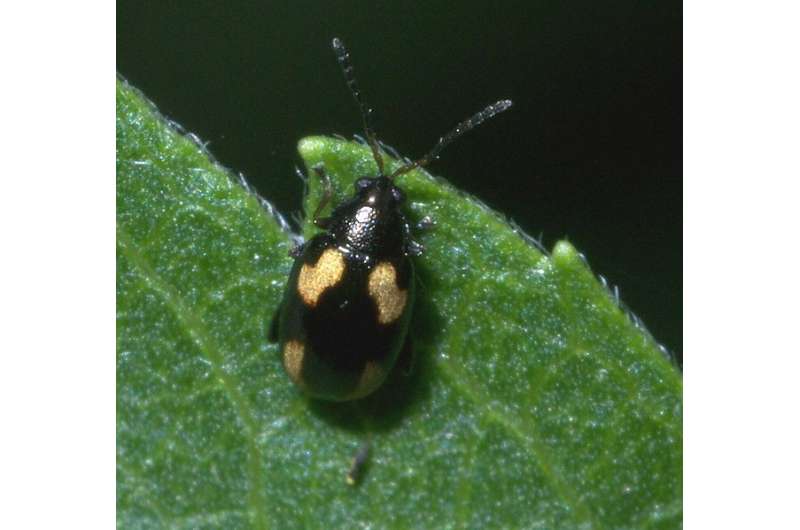Algorithmic pest control

Machine learning has now been used to identify important pests that can ravage vegetable crops, according to work published in the International Journal of Wireless and Mobile Computing.
Changzhen Zhang of Kaili University in Guizhou, Yaowen Ye, Deqin Xiao, Long Qi, and Jianjun Yin of the South China Agricultural University in Guangzhou, China point out that effective pest control requires knowledge of the species affecting the plants and the level of infestation. The team has used a so-called "bag-of-features" model to develop an automatic pest monitoring system has been. They explain that their approach combines remote information processing technology and machine vision technology.
The proposed system can be implemented in a vegetable crop field to monitor four major pests: Phyllotreta striolata (the Striped Flea Beetle, a pest of brassicas), Frankliniella occidentalis (the invasive Western Flower Thrips, feeds on some 500 or more different species of vegetable, fruit, and flower), Bemisia tabaci (the Tobacco White Fly, which affects tomato and other related plants), and Plutella xylostella (the diamond-back moth, a pest of cruciform crops).
The team demonstrated an error rate of less than 10% when compared with detection and counting by people trained to spot the pests. Given that B. tabaci can reduce tomato crop yields by 60% so the detection of such species is critical to efficient and effective farming. The other species mentioned can all affect a wide variety of crops with devastating consequences when infestation is allowed to run rampant.
The team has demonstrated success in a controlled environment. The next step will be to test the system and improve its abilities in a more complex and realistic vegetable-growing environment.
More information: Changzhen Zhang et al, Rapid detection and identification of major vegetable pests based on machine learning, International Journal of Wireless and Mobile Computing (2022). DOI: 10.1504/IJWMC.2022.124813
Provided by Inderscience



















